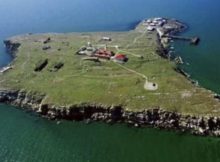Total 572 islands are gathered on the Andaman and Nicobar out of which 37 islands are inhabited. These islands have been protected traditionally and you will find very little information about the islands.
Everything is bound to change and similarly, something was bound to change about the islands. Not so long ago, the Indian home ministry announced that foreign tourists can visit the inhabited islands.
The Andaman and Nicobar Islands were formed when the Indian and Burmese plates bumped within the next opening of the back-arc basin about 4 million years ago.
Ecologically Fragile:
The Andaman and Nicobar Islands are at equal distance from both Kolkata and Chennai. The Nicobar Islands have always remained off-limits to outsiders, while only a couple of the Andamans are hospitable tourists.
Jarawas was one of the tribal groups which were recognized by one of the islands. Until now, the islands are deliberately under-developed, meaning the islands could retain their unique flora and fauna, and help keep the tribal inhabitants relatively undisturbed.
The islands are considered a global biodiversity hotspot for centuries as they contain species found nowhere else in the world. However, the region is ecologically fragile. The 2004 tsunami, aside from leaving thousands of individuals dead, is believed to possess irreversibly altered parts of the marine ecology and killed coral reefs closest to shore.
The government has assumed that some of the islands which are in 26 numbers have the potential for tourism development. The government has some plans which are stored for the future like construction of 220 resorts and dozens of campsites.
Strategically Important:
For Port Blair, it is nothing new about Indian military bases. Car Nicobar has an air force base which is the largest of the Nicobar Islands. The islands are very strategically located: on the brink of Myanmar and Indonesia, just north of the Malacca Straits, and a few of the world’s busiest shipping lanes.
Before 2012 the longer airstrips were built by India at the top and bottom of the island chain, including one at Campbell Bay on Great Nicobar Island, and it was opened in 2012. There are also plans to increase the number of naval vessels stationed on the islands.
The major transshipment terminal, Campbell Bay will help India better conduct trade with south-east Asian nations. This will go along with nine other major projects like infrastructure, tourism, digital connectivity, healthcare, and education. But it also remains the same as always i.e., the information is insufficient. And we all are aware that whatever the information is, whether it is sufficient or insufficient it will always spread like fire through mobile phones or Wi-Fi networks.
Climate:
The tropical climate of the Andaman and Nicobar Islands is controlled by the Sea Breezes. Throughout the year, temperatures typically rise from 23 °C to 30 °C daily. Annually about 3000 mm rain is received by the territory. In the Nicobars, Great Nicobar receives considerably more rain than the opposite islands.
Plant and Animal Life:
The dense tropical forest covers most of the area of the Andaman and Nicobar Islands. This majority of the area supports a broad spectrum of flora and fauna.
A tropical rainforest canopy is found in the Andaman and Nicobar Islands which is made of a mixed flora with elements from Indian, Myanmar, Malaysian, and endemic floral strains. There are 12 types of forest coverage which covers 86.2% of the total land area. Some of them are Giant evergreen forest, Andamans tropical evergreen forest, Southern hilltop tropical evergreen forest, Canebrakes, Wet bamboo brakes, Andamans semi-evergreen forest, etc.
The dominant tree species include narra and various large trees of the family Dipterocarpaceae. Narra is also called Andaman redwood, or padauk; Pterocarpus dalbergioides. The mangrove swamps often surround the harbours and tidal creeks. There are many species of tree ferns of the family Cyatheaceae which are found in the Nicobars but not in the Andamans.
Only a few dozen species of terrestrial and marine mammals (such as Andaman wild pig) inhabit the islands. Other common mammals are macaques, spotted deer, civets, shrews, whales, dolphins, and dugongs (Dugong dugon). More than 200 species feel at home in this territory which includes endemic varieties. Numerous sorts of snakes and lizards inhabit the forests, and saltwater crocodiles, fish, turtles, and sea snakes are abundant within the coastal waters. There are still many other species of flora and fauna which are left for systematic documentation. 96 wildlife sanctuaries, nine national parks, and one biosphere reserve are found in the Andaman and Nicobar Islands.







Recent Comments